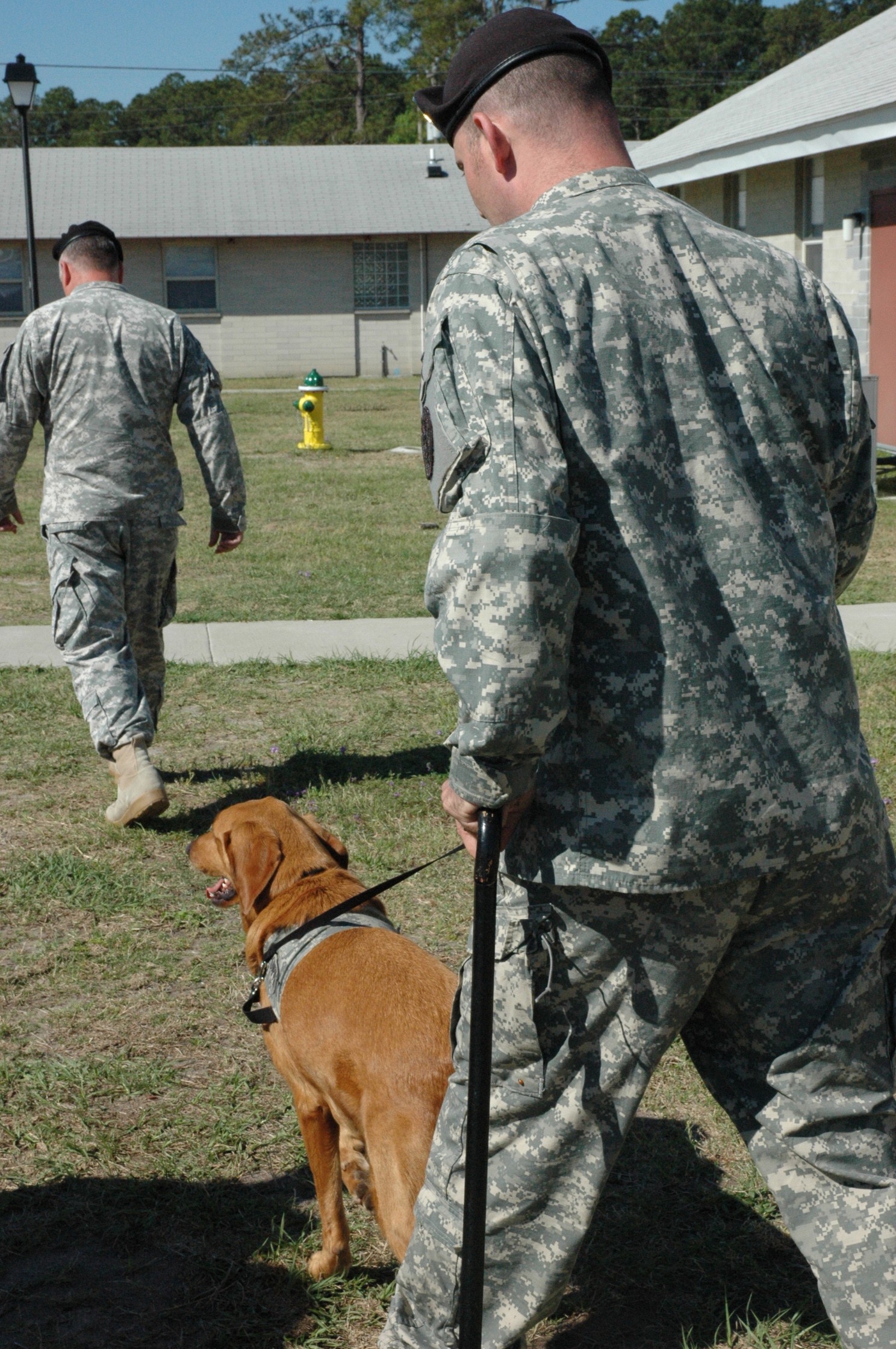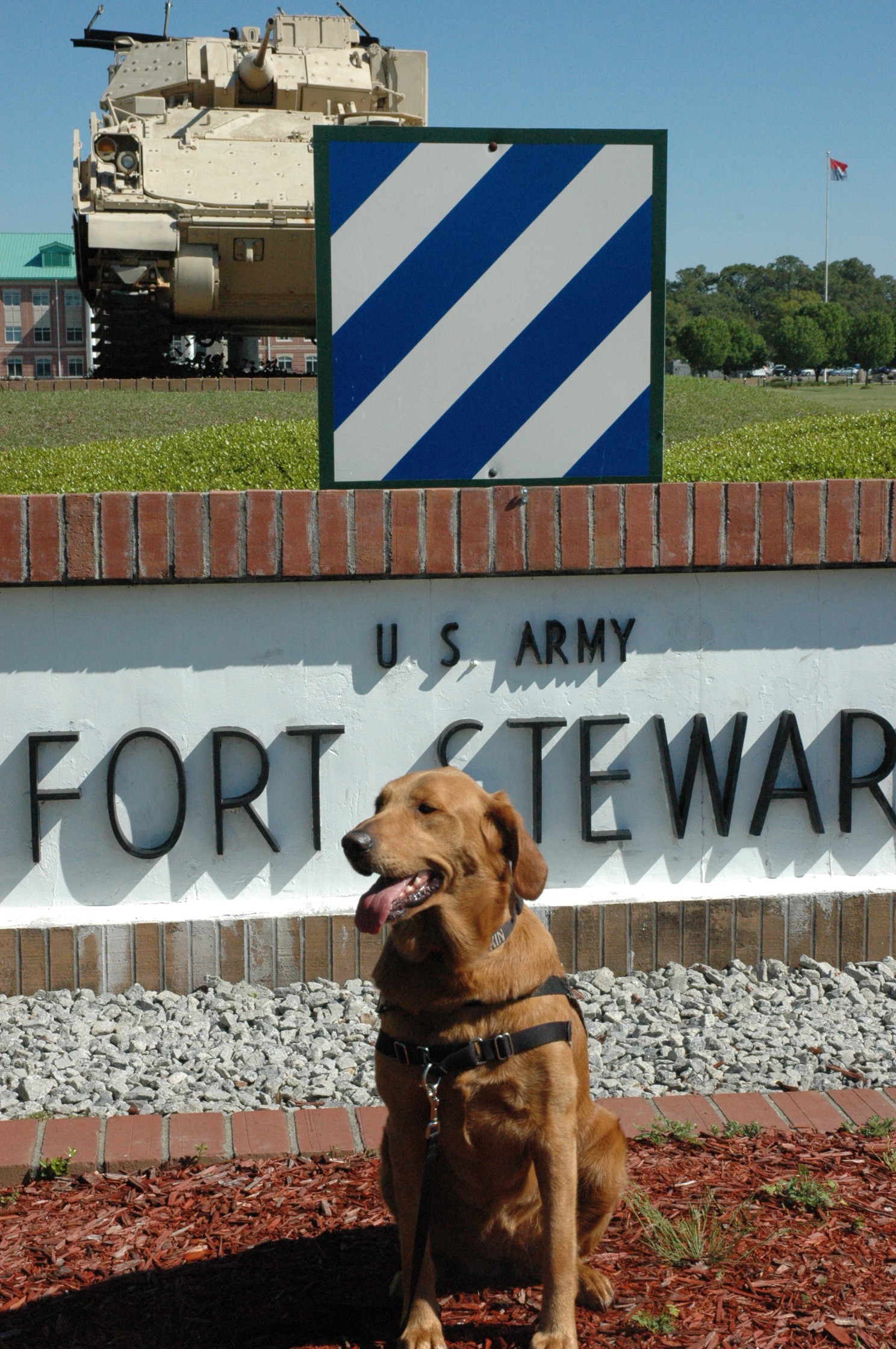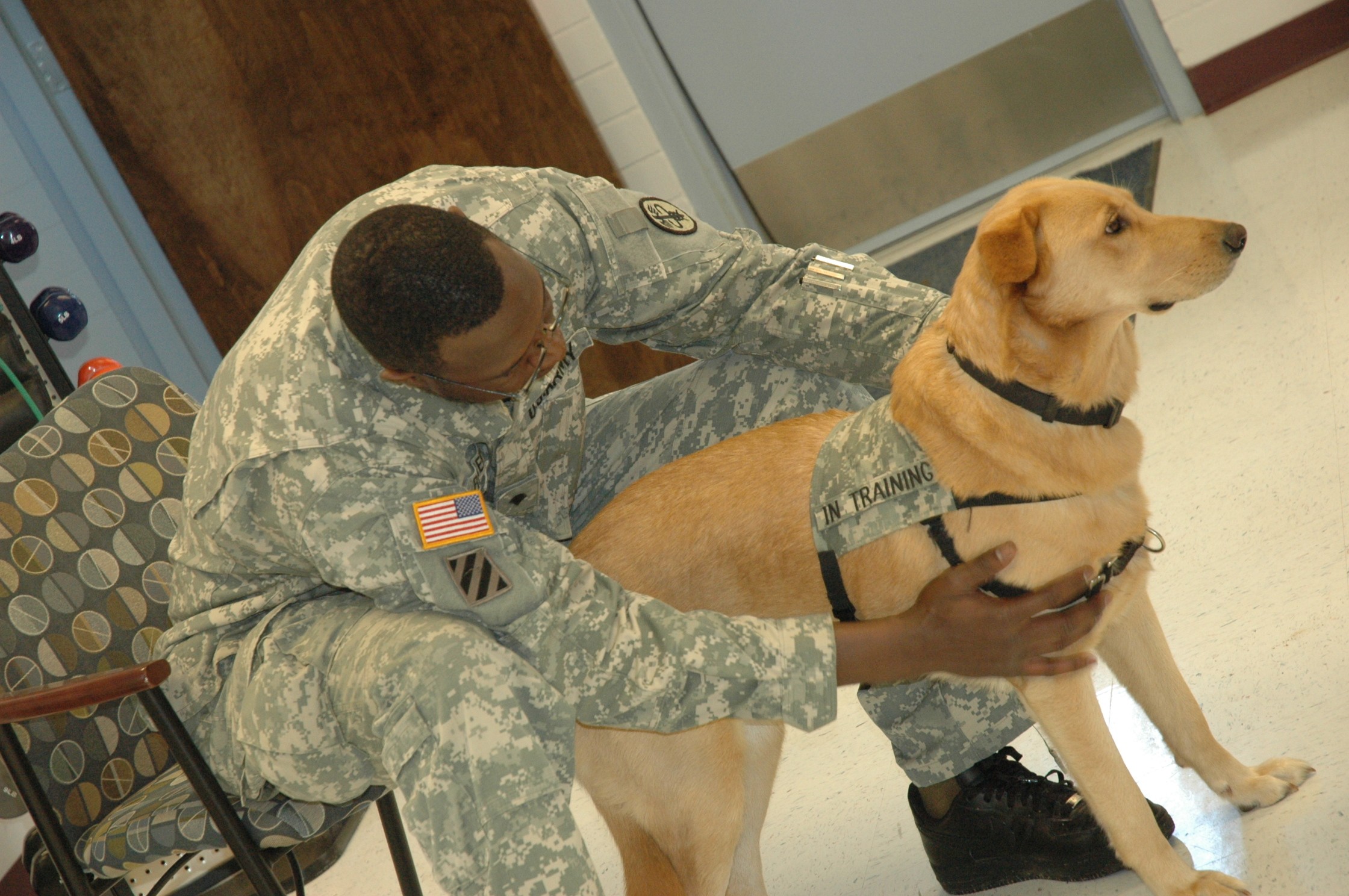In partnership with the paws4vets program, Winn Army Community Hospital's Warrior Transition Battalion is the chosen pilot site for the Army's Service Dog Training Program. Wounded Warriors are being given the opportunity to learn how to train service dogs that will be placed with disabled Soldiers or children with special needs.
"This being the first program of its kind, we will be setting the guidelines and standards for how this program will be reproduced at other settings," said Debra Dehart, occupational therapist, WINN's WTB.
What is paws4vets'
Through the paws4vets Assistance Dog Placement Program (p4vADPP) Veterans, Active Duty Service Members (ADSM) or their dependents with physical, neurological, psychiatric or emotional disabilities can receive Psychiatric Service Dogs, Mobility Service Dogs and Rehabilitative Assistance Dogs, free of charge.
All paws4vetsTM Assistance Dogs are trained by federal inmates within one of five federal prisons (www.paws4prisons.org) and/or the paws4vets Wounded Warrior PTSD Intervention and Assistance Dog Training Program.
The paws4vetsTM program has two primary goals:
-Provide Wounded Warriors with a unique opportunity to experience the "Special Therapeutic Powers" of the K-9/Human Bond enabling the Soldier to recover from, or at least learn to better cope with, handle and manage their Post Traumatic Stress Disorder (PTSD), Complex-Post Traumatic Stress Disorder (CPTSD) and/or Traumatic Brain Injury (TBI) symptoms.
-Train, certify and place Assistance Dogs with Veterans, Active-Duty Service Members (ADSM) or their dependents with physical, neurological, psychiatric or emotional disabilities.
Dogs attend Basic Training
Rehabilitation Access Dogs (RAD) and Service Dogs go through their Basic Training in the prison system first before "being assigned" to the WTB paws4vetsTM program.
"After the dogs complete their basic training, we take them through their advanced training which is getting them familiar with common access areas like businesses or restaurants," said Staff Sgt. Vernon Ward, noncommissioned officer-in-charge, paws4vets program at WINN's WTB. Both types of dogs are trained-up to the 68 basic commands together - commands like sit, stay, down, up, eat, drink, kennel, and up-on, Ward said.
On to Advanced Individual Training
After basic training, Service Dogs transition to a more advanced training where they learn commands like, 'light' to turn a light on, then 'switch' to turn the light off.
"The command 'pull' where they learn to open refrigerator doors, use door handles to open doors, and open drawers for people who are handicapped, " Ward said. "Plus, laser beams are used to train the dogs to pick-up items for people, for example, if someone is in a wheelchair and can't reach an item on a bottom shelf, they are trained to retrieve the item and give it to the individual," he said.
There are the common advanced commands, but some of the Service Dogs can be trained additional commands depending on the needs of the individual's needs; for example one of the WTB's Service Dogs will be going to a six-year-old little girl who has epilepsy.
"This dog has been trained to alert the parents when the child has a seizure, then once the parent gets to the child, the dog will retrieve a medical bag so the parent doesn't have to leave the child's side, Ward said. "When necessary the dog will then go to the door, open it, and wait for the paramedics to arrive."
Warriors transition to K-9 trainer
According to Dehart and Ward, the program has been well-received, in fact, most Soldiers are anxious to go through the assessment process so they can become part of the program.
The first step is Dehart will assess Soldiers' physical/cognitive/emotional and technical learning status to identify ways they may benefit from being a trainer. Then the Soldier's Nurse Case Manager and Social Worker will assess medical and behavioral status as well as potential benefits in participating in the program. Finally, a Soldier's chain of command provides a 'go' to participate in the program. Once approved, the Soldier will participate in a Dog Training Boot Camp and pass a test to progress to become a K-9 trainer for the RAD Dogs with more levels of training to follow.
Program enhances Soldiers' lives
Spc. Evan McQuiston, Warrior in Transition and RAD Dog Trainer, said the program has changed his life.
"Being a trainer has made me more sociable," McQuiston said. "Being a part of this program has gotten me out of my room, and given me more patience in dealing with not only animals, but people too," he said.
When asked 'what would you say to someone who is considering participating in the program,' McQuiston said "I'd tell them that it makes me feel good about myself because I'm giving back to the community and to a person who is in need of special care."
For more information about the paws4vets program, go to www.paws4vets.org.






Social Sharing